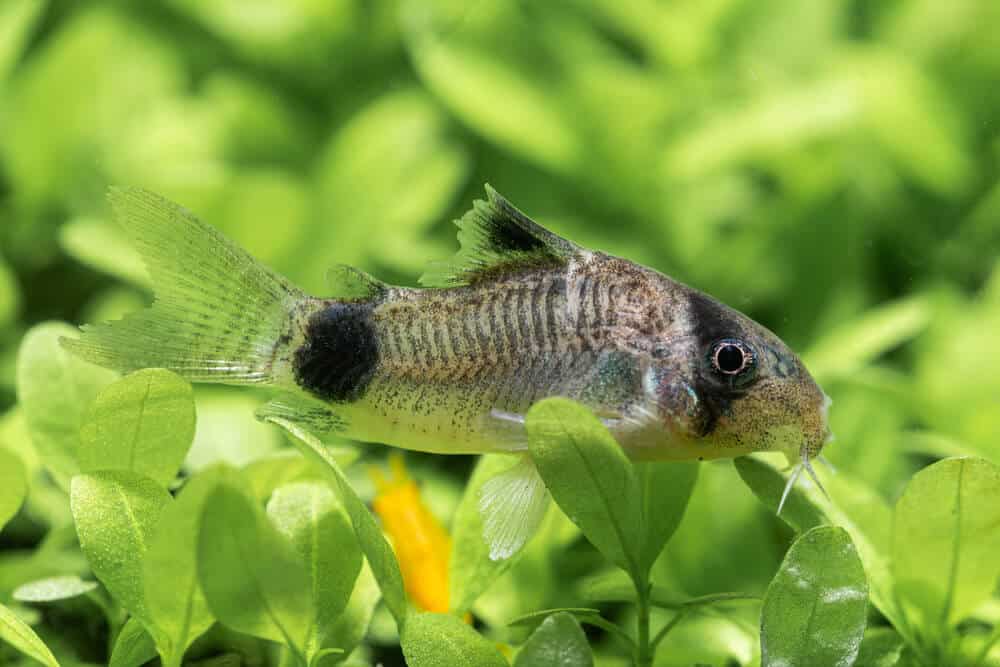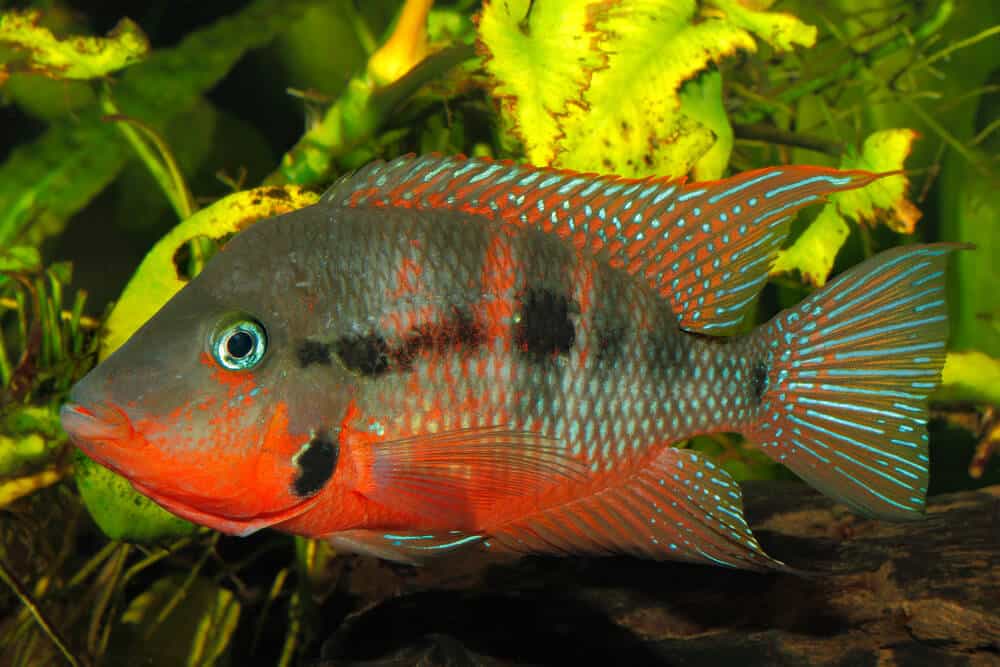What Are The Common Diseases That Affect Molly Fish?
If you’re a proud owner of Molly fish, it’s essential to be familiar with the common diseases that can affect these beautiful aquatic creatures. This article will provide you with an overview of some prevalent diseases that Molly fish are prone to. By understanding the signs and symptoms of these ailments, you’ll be better equipped to ensure the health and wellbeing of your beloved fish. So, let’s explore the world of Molly fish diseases and learn how to keep them happy and thriving!
Parasitic Diseases
Molly fish, like any other aquatic creatures, are susceptible to various diseases. Parasitic infections are one of the common types of ailments that can affect these beautiful tropical fish. Let’s take a closer look at some of the most prevalent parasitic diseases that molly fish may encounter.
Ich (Ichthyophthirius multifiliis)
Ichthyophthirius multifiliis, more commonly known as Ich, is a highly contagious parasite that poses a threat to molly fish. This microscopic protozoan parasite attaches itself to the skin and gills of the fish, resulting in visible white spots resembling grains of salt. The affected fish may exhibit symptoms such as scratching against surfaces, rapid breathing, and loss of appetite. Prompt treatment is crucial to prevent the spread of the disease and alleviate discomfort for your precious molly fish.
Velvet Disease (Oodinium spp.)
Oodinium spp., or commonly referred to as Velvet disease, is another parasitic infection that can affect molly fish. This parasite is easily spread through contaminated water or contact with infected fish. Velvet disease presents itself by causing a fine golden or rust-colored dusting on the fish’s skin. Infected fish may display symptoms of lethargy, loss of appetite, rapid breathing, and rubbing against objects. Early detection and proper treatment are essential to minimize the impact of Velvet disease on your adorable molly fish.
Gill Flukes (Dactylogyrus spp.)
Gill flukes, caused by the Dactylogyrus parasite, pose a threat to the health of molly fish by infesting their gills. These tiny flatworm parasites attach themselves to the gill tissues, causing irritation, inflammation, and difficulty in breathing for the affected fish. Symptoms of gill fluke infection include increased mucus production, labored breathing, reduced activity, and reduced appetite. Timely treatment and a clean aquatic environment are crucial to managing this parasitic disease and ensuring the well-being of your molly fish.
Skin Flukes (Gyrodactylus spp.)
Similar to gill flukes, skin flukes, caused by the Gyrodactylus parasite, can afflict molly fish by attaching themselves to the fish’s skin and fins. These tiny worms can cause irritation, redness, and inflammation, leading to skin ulcers and respiratory problems. Much like other parasitic infections, early detection and swift treatment are essential in combating skin flukes and preserving the health of your molly fish. Regular monitoring and maintaining optimal water quality are crucial preventive measures.
Bacterial Infections
In addition to parasitic diseases, bacterial infections pose another significant threat to the well-being of molly fish. Let’s explore some common bacterial infections that can affect your beloved aquatic companions.
Columnaris (Flexibacter columnaris)
Columnaris, caused by the Flexibacter columnaris bacteria, is a common bacterial infection that can affect molly fish. This disease often manifests as white, gray, or yellowish lesions on the fish’s body and fins. Additionally, affected fish may exhibit symptoms such as frayed fins, difficulty swimming, loss of appetite, and lethargy. Prompt treatment with antibiotics and maintaining optimal water conditions are vital in combating Columnaris and minimizing its impact on your molly fish.
Mouth Fungus (Flavobacterium columnare)
Mouth fungus, caused by the Flavobacterium columnare bacteria, is a bacterial infection that affects the mouth and lips of molly fish. It typically appears as white or yellowish cotton-like growths around the fish’s mouth, leading to difficulty in eating and potential secondary infections if left untreated. Treating mouth fungus typically involves the use of antibacterial medications and maintaining excellent water quality. Early intervention is crucial to safeguarding the health and well-being of your molly fish.
Dropsy (Edwardsiella tarda)
Dropsy, caused by the Edwardsiella tarda bacteria, is a severe bacterial infection that affects the kidneys and other internal organs of molly fish. Fish with Dropsy often display symptoms such as a bloated abdomen, raised scales, protruding pinecone-like appearance, and lethargy. Sadly, Dropsy is often difficult to treat, and affected fish have a lower chance of survival. Maintaining excellent water quality, regular monitoring of fish health, and swift action at the first sign of symptoms may help prevent the onset of this devastating disease.
Septicemia (Aeromonas hydrophila)
Aeromonas hydrophila can cause septicemia, a bacterial infection that affects the bloodstream of molly fish. Fish suffering from septicemia exhibit symptoms such as pale gills, loss of appetite, lethargy, and erratic swimming behavior. This disease can rapidly spread and prove fatal if not treated promptly. Administering appropriate antibiotics and maintaining optimal water conditions are vital in combating septicemia and protecting the well-being of your molly fish.
Fungal Infections
Apart from parasitic and bacterial diseases, molly fish are also susceptible to fungal infections. Let’s explore some common fungal diseases that can impact these delightful aquatic creatures.
Cotton Wool Disease (Saprolegnia spp.)
Saprolegnia spp. can cause cotton wool disease, a fungal infection that affects the skin and fins of molly fish. Affected areas display a fuzzy appearance resembling cotton wool or mold. Fish suffering from this fungal infection may experience redness, inflammation, open wounds, and increased susceptibility to secondary infections. Prompt treatment with antifungal medications and maintaining pristine water quality are essential in managing cotton wool disease and promoting the recovery of your molly fish.
Fin and Tail Rot (Columnaris spp.)
Columnaris spp. are also responsible for fin and tail rot, a fungal infection that affects the fins and tail of molly fish. Affected fish may exhibit frayed, discolored, or decaying fins and tail, along with possible secondary bacterial infections. Treating fin and tail rot involves promptly addressing the underlying fungal infection, maintaining optimal water conditions, and enhancing the fish’s overall immune system. Early intervention and proper care are crucial in preventing the disease from progressing and causing harm to your precious molly fish.
Mouth Fungus (Branchiomyces spp.)
Branchiomyces spp. can cause mouth fungus, a fungal infection that primarily affects the mouth and lips of molly fish. This disease often presents itself as white or grayish growths around the fish’s mouth, leading to difficulty in eating and potential secondary infections. Treating mouth fungus typically involves the use of antifungal medications and ensuring excellent water quality. Regular observation and swift action are necessary to maintain the health and vitality of your molly fish.
Viral Infections
While less common, viral infections can still pose a significant threat to the well-being of molly fish. Let’s explore one of the notable viral diseases that can affect these aquatic wonders.
Lymphocystis (Lymphocystivirus spp.)
Lymphocystis, caused by the Lymphocystivirus family of viruses, is a viral infection that affects the skin and fins of molly fish. Infected fish develop raised white or pinkish nodules on their body, fins, and even internal organs. These nodules can significantly impede the fish’s movement and cause discomfort. Unfortunately, there is no cure for viral infections, including Lymphocystis, and the nodules will eventually subside on their own. Maintaining optimal water quality and minimizing stressors are crucial in supporting your molly fish’s immune system to combat this viral infection and prevent further complications.
Protozoan Infections
Protozoan infections are another category of ailments that can affect molly fish. Let’s explore a common protozoan disease that molly fish may encounter.
Hexamita (Hexamita spp.)
Hexamita spp. can cause Hexamita, a protozoan infection that affects the intestines and digestive system of molly fish. Affected fish may exhibit symptoms such as weight loss, decreased appetite, pale coloration, and abnormal feces. Treating Hexamita typically involves the use of specialized medications and enhancing the fish’s overall well-being through appropriate nutrition and water quality. Timely detection and intervention are vital in preventing further complications and promoting the recovery of your molly fish.
Other Diseases
Apart from the aforementioned categories, molly fish may also be susceptible to other diseases that don’t fit into a specific category. Let’s explore a few notable ones.
Swim Bladder Disorder
Swim bladder disorder is a common non-specific ailment that affects the swim bladder of molly fish. Fish with this disorder often exhibit difficulty in maintaining buoyancy, leading to abnormal swimming behavior, sinking, or floating at the water’s surface. Although there is no specific cure for swim bladder disorder, adjusting the fish’s diet, maintaining optimal water conditions, and providing appropriate tank decorations may help alleviate the symptoms and promote a better quality of life for your molly fish.
Popeye (Exophthalmia)
Popeye, also known as exophthalmia, is a condition that affects the eyes of molly fish. Infected fish display swollen or protruding eyes, impairing their vision and potentially causing discomfort. Popeye can be caused by various factors, including bacterial infections, trauma, or poor water quality. Treating Popeye involves addressing the underlying cause, maintaining pristine water conditions, and providing a stress-free environment. Early detection and intervention are essential in preventing further complications and promoting the well-being of your molly fish.
Tuberculosis (Mycobacterium spp.)
Mycobacterium spp. can cause tuberculosis, a bacterial disease that affects various organs of molly fish. Infected fish may display symptoms such as weight loss, skin ulcers, bloating, and a general decline in health. Unfortunately, tuberculosis is challenging to treat, and affected fish have a significantly reduced chance of survival. Maintaining optimal water quality and implementing strict quarantine procedures when introducing new fish are crucial preventive measures in safeguarding the health of your molly fish.
In conclusion, molly fish can be susceptible to a range of diseases, including parasitic infections, bacterial infections, fungal infections, viral infections, protozoan infections, and other non-specific ailments. Proper care, regular monitoring, and maintaining optimal water conditions are vital in preventing and managing these diseases. If you observe any concerning symptoms or behaviors in your molly fish, it’s important to act swiftly and seek appropriate treatment to ensure their health and well-being. With the right care and attention, you can enjoy the companionship and beauty of these delightful aquatic creatures for years to come.





